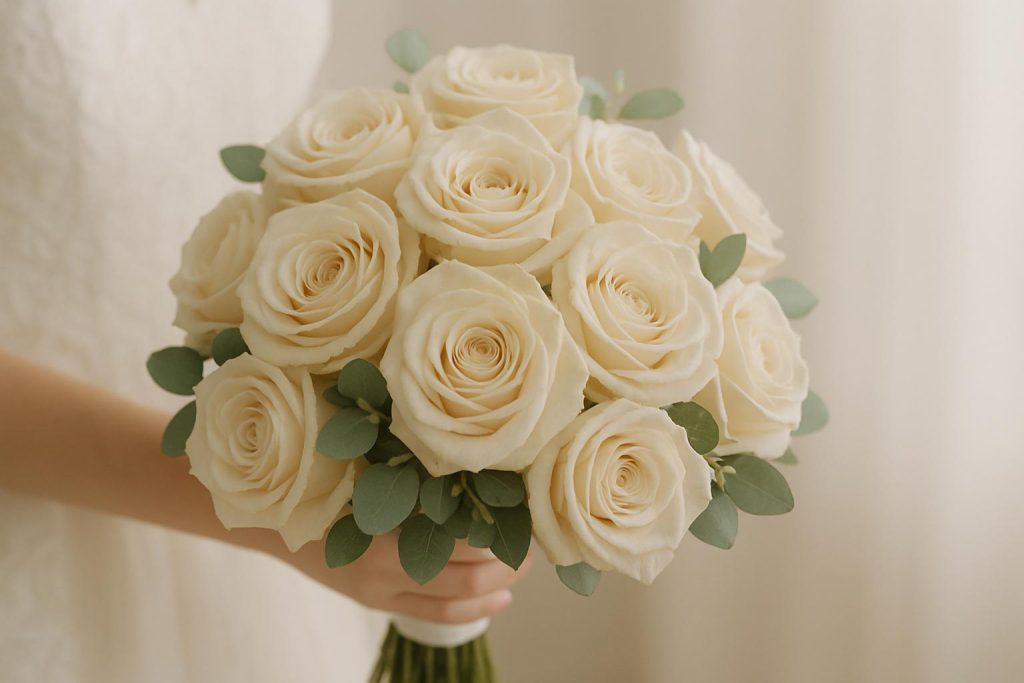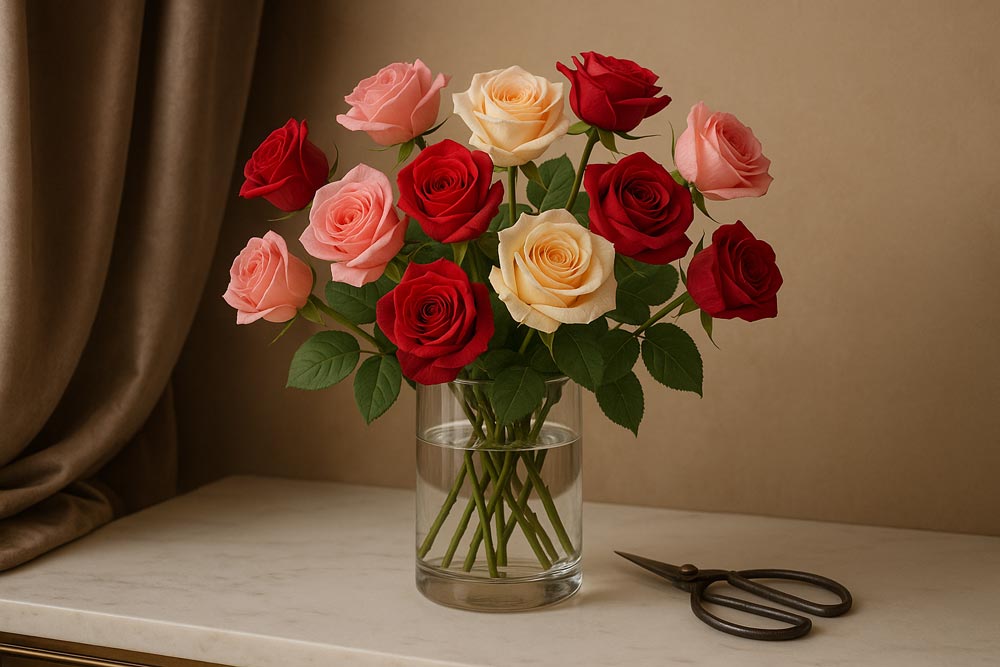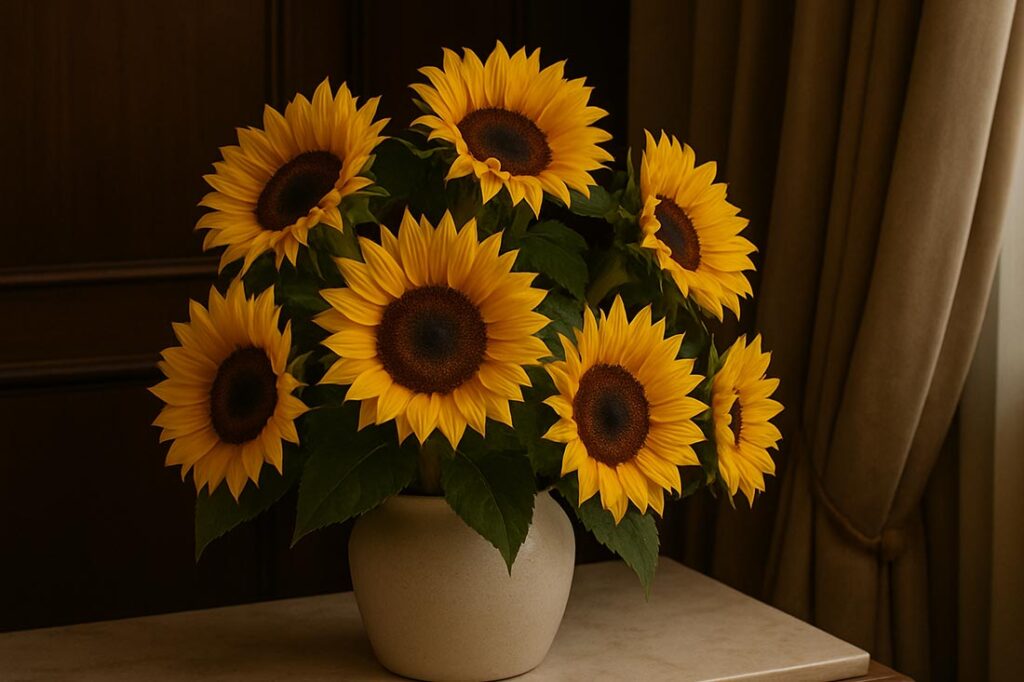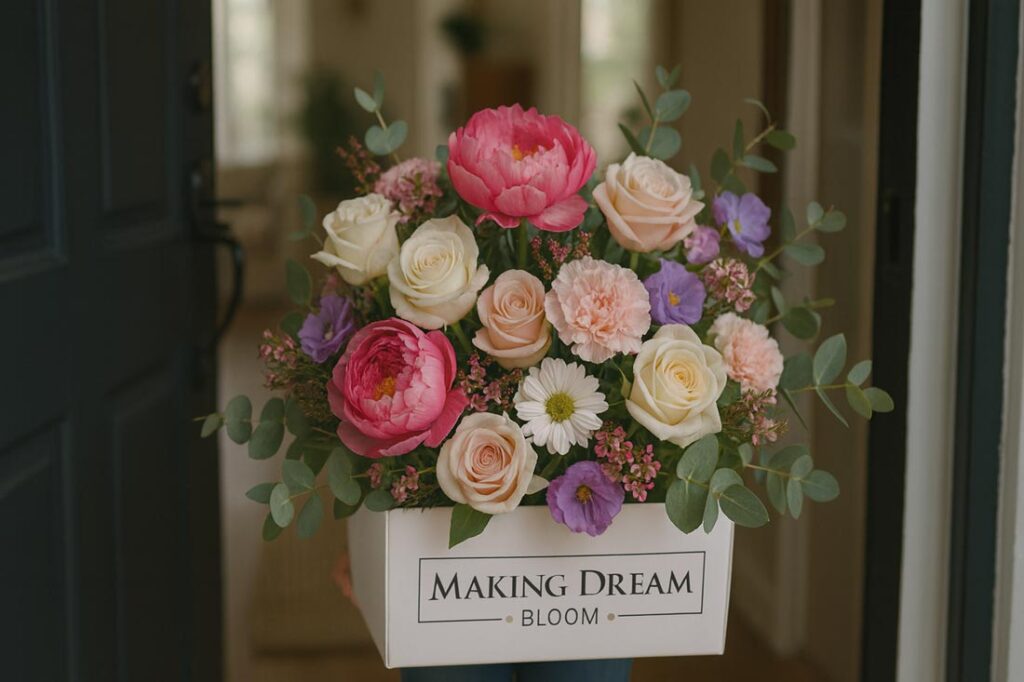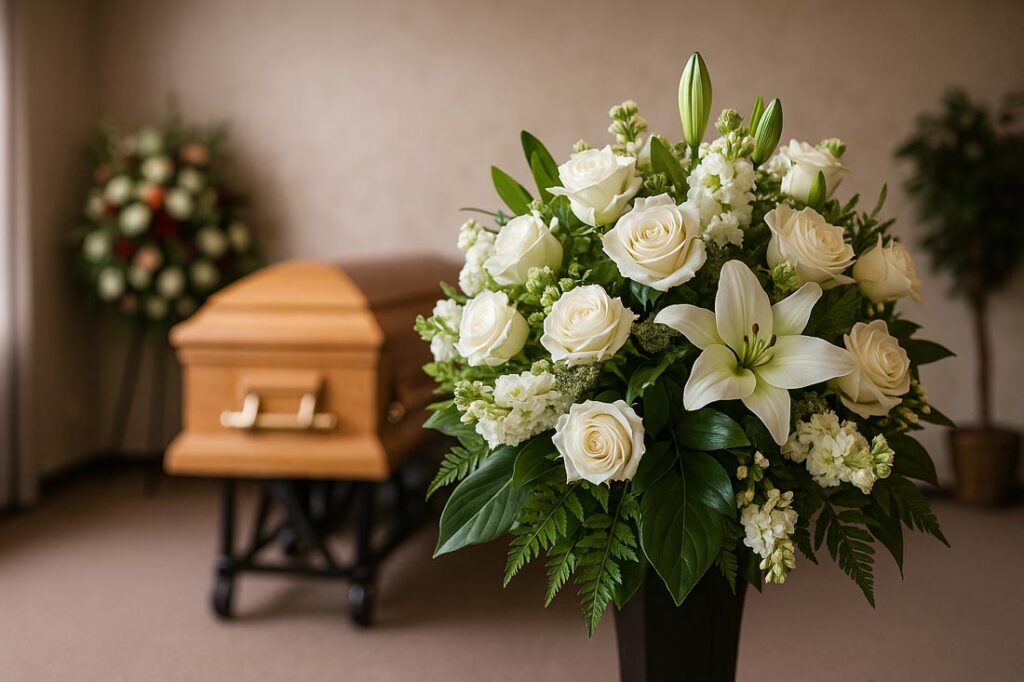Common Mistakes in Flower Care and How to Avoid Them

Table of Contents
Common Mistakes in Flower Care and How to Avoid Them?
Flowers bring beauty and life into our homes and offices, but improper care can lead to early wilting and disappointment. Whether you’ve received a bouquet as a gift, purchased one from your favorite florist, or ordered a delivery to brighten your space, proper flower care is essential to keep them fresh and vibrant for as long as possible. This article will cover some of the most common mistakes people make when caring for flowers and how to avoid them.
- Neglecting to Trim the Stems
The mistake: Many people place flowers directly into a vase without trimming the stems first, not realizing that fresh cuts are essential for water absorption. Over time, flower stems seal up, making it difficult for them to take in water.
How to avoid it: Always trim at least an inch off the bottom of each stem before placing flowers in a vase. Use sharp scissors or pruning shears to cut at a 45-degree angle, which increases the surface area for water uptake. Make sure to trim the stems every few days to keep them healthy and hydrated.
- Using Dirty Vases
The mistake: Not cleaning the vase properly before placing flowers in it. Dirty vases can harbor bacteria that will quickly kill your flowers.
How to avoid it: Before putting flowers in a vase, thoroughly wash it with soap and hot water. Rinse out any residue, as even small traces of old water or bacteria can contaminate fresh flowers. Regularly change the water and clean the vase to prevent bacterial growth.
- Placing Flowers in Direct Sunlight
The mistake: Many assume that, like houseplants, cut flowers need direct sunlight. In reality, too much sun exposure can cause flowers to wilt prematurely.
How to avoid it: Keep flowers in a cool, shaded area. Avoid placing them in direct sunlight or near heat like radiators, appliances, or open windows that get a lot of sun. A cool spot away from drafts will extend their life.
- Using Tap Water Without Treatment
The mistake: Tap water often contains minerals and chemicals like fluoride and chlorine, which can harm the flowers. Many people use plain tap water without considering its impact on flower health.
How to avoid it: Use room-temperature water for your flowers, preferably filtered water if possible. If you only have tap water, let it sit for an hour or two to allow some of the chemicals to dissipate before adding it to the vase.
- Forgetting to Remove Foliage Below the Waterline
The mistake: Leaving leaves and foliage submerged in water can cause bacteria to grow, which will shorten the lifespan of your flowers.
How to avoid it: Always remove any leaves or foliage below the waterline in your vase. Leaves in the water will decay and create an environment where bacteria thrive, so keeping the water clean is crucial.
- Not Changing the Water Regularly
The mistake: Leaving flowers in the same water for days or even weeks is a common mistake. Stale water becomes a breeding ground for bacteria, which can quickly damage the stems and lead to wilting.
How to avoid it: Change the water every 1-2 days to keep it fresh. When changing the water, rinse the vase and re-trim the stems to ensure maximum hydration.
- Using the Wrong Flower Food
The mistake: Not all flower foods are created equal, and some people skip using flower food altogether, not realizing it can significantly prolong the life of their flowers.
How to avoid it: Always use the flower food that comes with your bouquet, or create your own by mixing sugar, vinegar, and a few drops of bleach. The sugar nourishes the flowers, while vinegar helps maintain the water’s pH balance, and bleach reduces bacterial growth. Be sure to follow the correct measurements for effectiveness.
- Overcrowding Flowers in the Vase
The mistake: Packing too many flowers into one vase can limit their ability to “breathe,” causing some flowers to wilt faster due to overcrowding.
How to avoid it: Give your flowers room to breathe. Use a vase that’s appropriately sized for the bouquet and arrange the stems so they aren’t too cramped. This will allow each flower to access water and air, keeping them fresh longer.
- Ignoring Temperature and Humidity Changes
The mistake: Sudden temperature or high humidity changes can stress flowers, causing them to wilt or dry out.
How to avoid it: Avoid placing flowers near drafts, air conditioners, or heaters. Sudden changes in temperature or exposure to blasts of hot or cold air can shock flowers and reduce their longevity. Ideally, keep your flowers in a stable, cool environment with moderate humidity.
- Improper Handling of Delicate Blooms
The mistake: Rough handling can bruise petals and damage delicate flowers like roses, lilies, or orchids.
How to avoid it:
- Handle flowers gently, especially when arranging or moving them.
- Be mindful of their fragility, particularly with blooms that have delicate petals.
- If unsure, ask your florist for advice on handling specific flower types.
Bonus Tip: Know When to Remove Wilting Flowers
The mistake: Leaving wilting flowers in the arrangement can spread bacteria and hasten the decline of the entire bouquet.
How to avoid it: As soon as you notice a flower wilting, remove it from the arrangement. Wilting flowers can introduce bacteria into the water, affecting the health of the remaining blooms. Regularly check your arrangement and discard any past-prime flowers to keep the rest fresh.
Conclusion
By avoiding these mistakes, you can significantly extend the life of your fresh flowers and enjoy their beauty for days or even weeks longer. Whether you’re a flower enthusiast or just want to make the most of your next bouquet, proper flower care is key. Remember to trim the stems, keep the water clean, and place your flowers in a cool, stable environment for the best results.
About Elena Viktorova
Hi, I’m Elena Viktorova — the heart behind MakingDream.ca. I’ve always been drawn to flowers, lovely little gifts, and the simple joys that make life feel magical. This space is where I share the things I love, the beauty I find in everyday moments, and the inspiration that helps me keep dreaming. I’m so happy you’re here — let’s make something beautiful together.
View all posts by Elena Viktorova
